The true value and potential of MCP can only be fully realized when AI Agents integrate it and transform it into practical applications.
Written by: Frank Fu @IOSG
MCP is rapidly becoming the core of the Web3 AI Agent ecosystem, introducing the MCP Server through a plugin-like architecture, empowering AI Agents with new tools and capabilities.
Similar to other emerging narratives in the Web3 AI space (such as vibe coding), MCP, which stands for Model Context Protocol, originated from Web2 AI and is now being reimagined in the context of Web3.
What is MCP?
MCP is an open protocol proposed by Anthropic to standardize how applications convey contextual information to large language models (LLMs). This allows for more seamless collaboration between tools, data, and AI Agents.
Why is it important?
The core limitations faced by current large language models include:
Inability to browse the internet in real-time
Inability to directly access local or private files
Inability to autonomously interact with external software
MCP acts as a universal interface layer, bridging the gap in the above capabilities, enabling AI Agents to utilize various tools.
You can think of MCP as the USB-C of the AI application domain—a unified interface standard that makes it easier for AI to connect with various data sources and functional modules.
Imagine each LLM as a different phone—Claude uses USB-A, ChatGPT uses USB-C, and Gemini uses a Lightning connector. If you are a hardware manufacturer, you would need to develop a set of accessories for each interface, leading to extremely high maintenance costs.
This is precisely the problem faced by AI tool developers: customizing plugins for each LLM platform greatly increases complexity and limits scalability. MCP is designed to solve this issue by establishing a unified standard, akin to having all LLMs and tool providers use a USB-C interface.
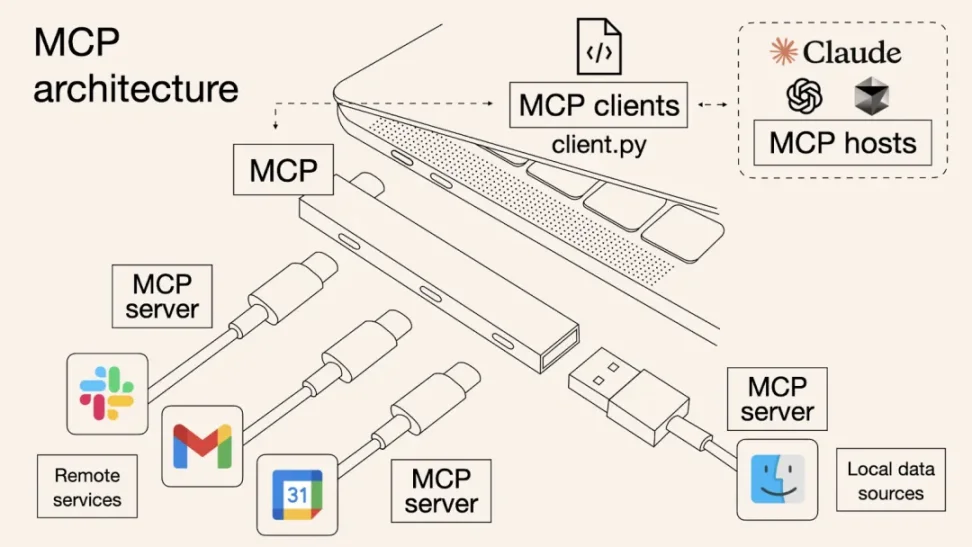
This standardized protocol benefits both parties:
For AI Agents (clients): they can securely access external tools and real-time data sources
For tool developers (servers): a single integration that is cross-platform usable
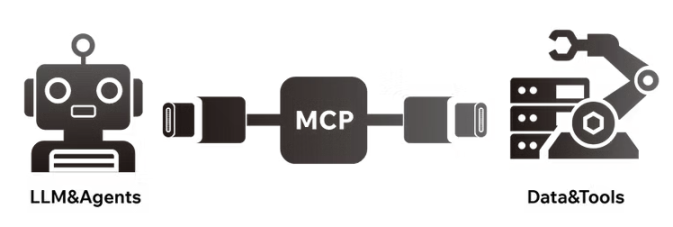
The end result is a more open, interoperable, and low-friction AI ecosystem.

How is MCP different from traditional APIs?
APIs are designed for human use, not AI-first. Each API has its own structure and documentation, requiring developers to manually specify parameters and read interface documentation. However, AI Agents themselves cannot read documentation and must be hard-coded to adapt to each API (such as REST, GraphQL, RPC, etc.).
MCP standardizes the function call format within APIs, abstracting away these unstructured parts and providing Agents with a unified calling method. You can think of MCP as an API adaptation layer encapsulated for Autonomous Agents.
When Anthropic first launched MCP in November 2024, developers needed to deploy MCP servers on local devices. However, in May of this year, Cloudflare announced during its developer week that developers could directly deploy remote MCP servers on the Cloudflare Workers platform with minimal device configuration. This greatly simplifies the deployment and management process of MCP servers, including authentication and data transmission, making it a "one-click deployment."
Although MCP itself may seem "unattractive," it is by no means insignificant. As a purely infrastructural component, MCP cannot be used directly by consumers; its value will only become apparent when upper-layer AI agents call MCP tools and demonstrate practical effects.
Web3 AI x MCP Ecosystem Landscape
AI in Web3 also faces the issues of "lack of contextual data" and "data silos," meaning that AI cannot access on-chain real-time data or natively execute smart contract logic.
In the past, projects like ai16Z, ARC, Swarms, and Myshell attempted to build multi-Agent collaborative networks but ultimately fell into the "reinventing the wheel" dilemma due to reliance on centralized APIs and custom integrations.
Each time a data source is integrated, the adaptation layer must be rewritten, leading to skyrocketing development costs. To address this bottleneck, the next generation of AI Agents needs a more modular, Lego-like architecture to facilitate seamless integration of third-party plugins and tools.
Thus, a new generation of AI Agent infrastructure and applications based on MCP and A2A protocols is emerging, specifically designed for Web3 scenarios, allowing Agents to access multi-chain data and natively interact with DeFi protocols.
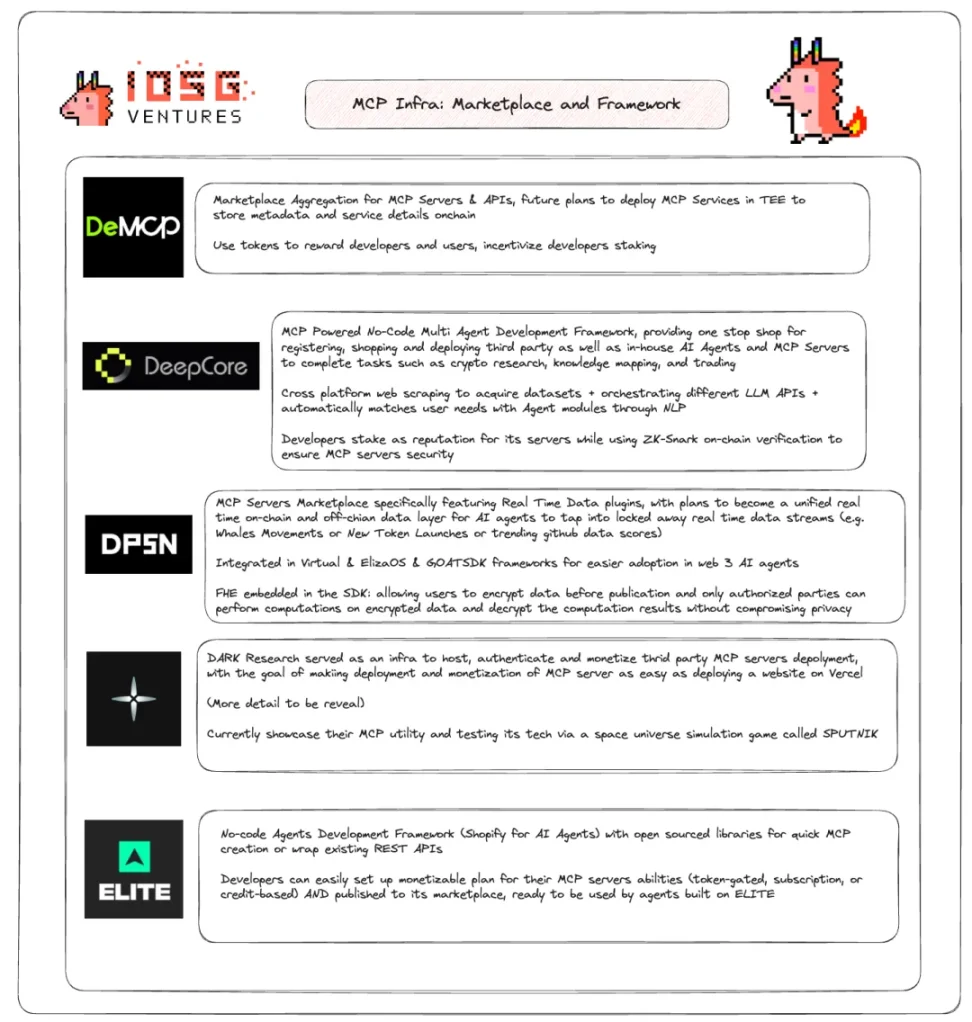
▲ Source: IOSG Ventures
(This image does not fully cover all MCP-related Web3 projects)
Project Case: DeMCP and DeepCore
DeMCP is a marketplace for decentralized MCP Servers (https://github.com/modelcontextprotocol/servers), focusing on native encryption tools and ensuring the sovereignty of MCP tools.
Its advantages include:
Using TEE (Trusted Execution Environment) to ensure MCP tools are not tampered with
Utilizing a token incentive mechanism to encourage developers to contribute MCP servers
Providing MCP aggregators and micropayment functions to lower the usage threshold

Another project, DeepCore (deepcore.top), also offers an MCP Server registration system, focusing on the encryption field and further expanding to another open standard proposed by Google: the A2A (Agent-to-Agent) protocol (https://x.com/i/trending/1910001585008058782).
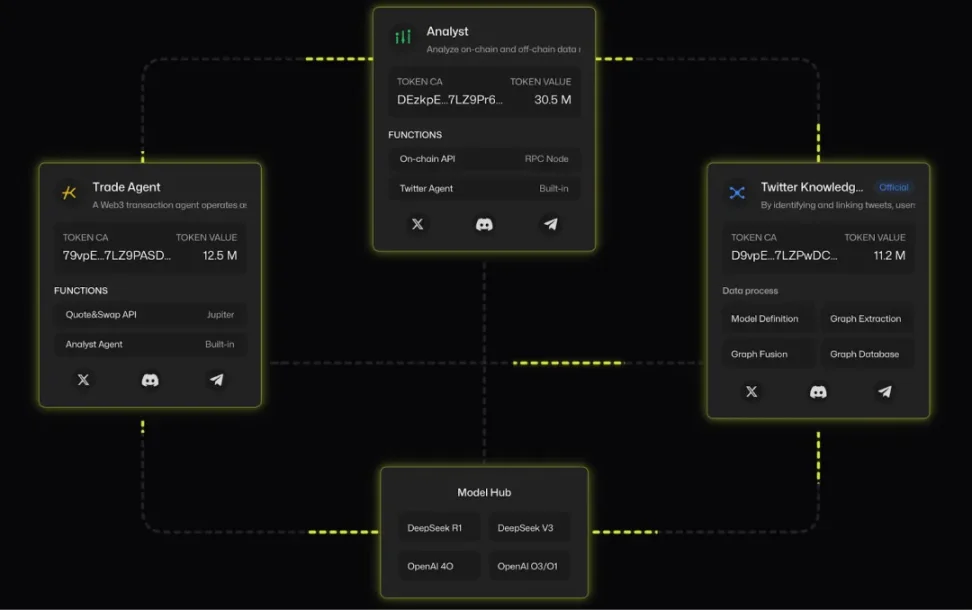
A2A is an open protocol announced by Google on April 9, 2025, aimed at enabling secure communication, collaboration, and task coordination between different AI agents. A2A supports enterprise-level AI collaboration, allowing AI agents from different companies to work together on tasks (such as Salesforce's CRM agent collaborating with Atlassian's Jira agent).
While MCP focuses on the interaction between Agents (clients) and tools (servers), A2A serves as a collaborative intermediary layer between Agents, allowing multiple Agents to work together on tasks without sharing internal states. They collaborate through context, instructions, state updates, and data transmission.
A2A is considered the "universal language" for AI agent collaboration, promoting cross-platform and cross-cloud AI interoperability, potentially changing the way enterprise AI operates. Therefore, A2A can be seen as the Slack of the Agent world—one Agent initiates a task, and another Agent executes it.
In short:
MCP: Provides Agents with tool access capabilities
A2A: Provides Agents with the ability to collaborate with each other
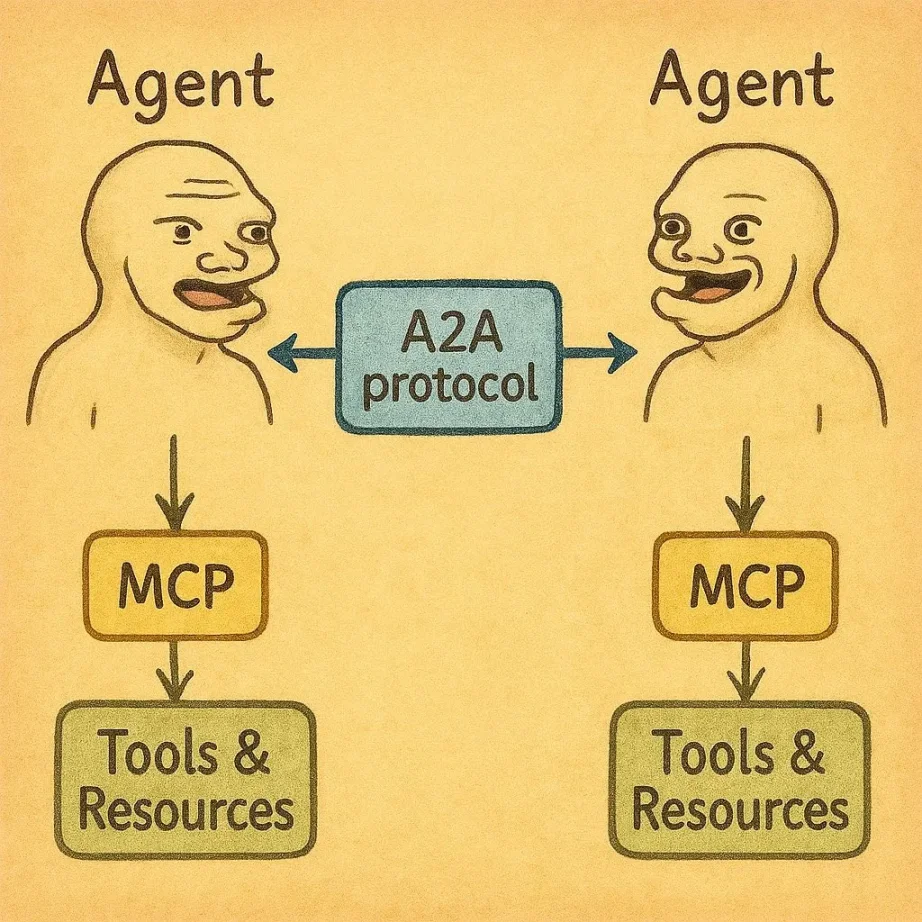
Why do MCP servers need blockchain?
Integrating blockchain technology into MCP Servers offers several benefits:
1. Obtaining long-tail data through encrypted native incentive mechanisms, encouraging community contributions of scarce datasets.
2. Defending against "tool poisoning" attacks, where malicious tools disguise themselves as legitimate plugins to mislead Agents.
Blockchain provides cryptographic verification mechanisms, such as TEE Remote Attestation, ZK-SNARK, FHE, etc.
For more details, refer to this article (https://ybbcapital.substack.com/p/from-suis-sub-second-mpc-network?utm_source=substack&utm_medium=email)
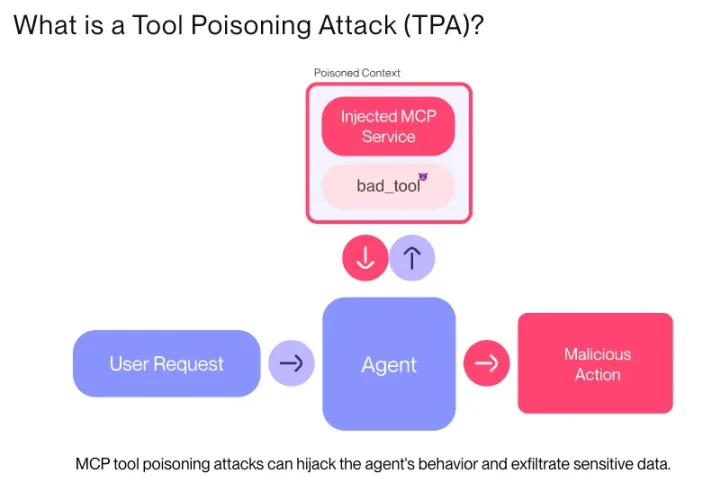
3. Introducing staking/punishment mechanisms, combined with on-chain reputation systems to build a trust framework for MCP servers.
4. Enhancing system fault tolerance and real-time capabilities, avoiding single points of failure in centralized systems like Equifax.
5. Promoting open-source innovation, allowing small developers to publish datasets like ESG data sources, enriching ecosystem diversity.
Currently, most MCP Server infrastructures still match tools by parsing user natural language prompts. In the future, AI Agents will be able to autonomously search for the required MCP tools to achieve complex task objectives.
However, the MCP project is still in its early stages. Most platforms remain centralized plugin markets, where project teams manually organize third-party server tools from GitHub and develop some plugins in-house, essentially not much different from the Web2 plugin market, with the only distinction being a focus on Web3 scenarios.
Future Trends and Industry Impact
Currently, more and more individuals in the crypto industry are beginning to recognize the potential of MCP in connecting AI and blockchain. For example, Binance founder CZ recently publicly called on AI developers to actively build high-quality MCP servers to provide a richer toolset for AI Agents on the BNB Chain. The list of BNB MCP Server projects has been made public for users exploring the ecosystem.
As the infrastructure matures, the competitive advantage of "developer-first" companies will shift from API design to: who can provide a richer, more diverse, and easily combinable toolset.
In the future, every application may become an MCP client, and every API may become an MCP server.
This could give rise to new pricing mechanisms: Agents could dynamically select tools based on execution speed, cost efficiency, relevance, and more, forming a more efficient Agent service economy empowered by Crypto and blockchain as intermediaries.
Of course, MCP itself does not directly target end users; it is a foundational protocol layer. In other words, the true value and potential of MCP can only be realized when AI Agents integrate it and transform it into practical applications.
Ultimately, Agents are the carriers and amplifiers of MCP capabilities, while blockchain and cryptographic mechanisms build a trustworthy, efficient, and composable economic system for this intelligent network.
免责声明:本文章仅代表作者个人观点,不代表本平台的立场和观点。本文章仅供信息分享,不构成对任何人的任何投资建议。用户与作者之间的任何争议,与本平台无关。如网页中刊载的文章或图片涉及侵权,请提供相关的权利证明和身份证明发送邮件到support@aicoin.com,本平台相关工作人员将会进行核查。




